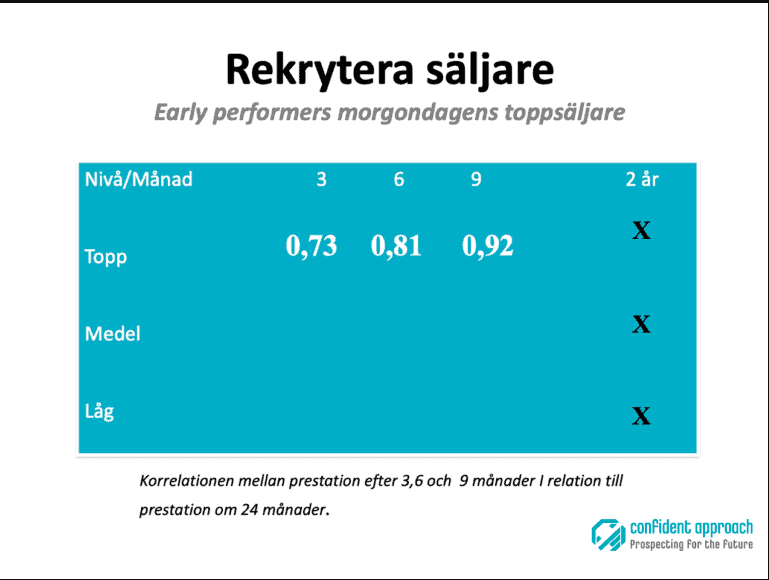How does a low-performing and a high-performing salesperson change over time? Christer B Jansson has a reflection about it in this article.
What does the relationship really look like for salespeople and their performance over time? For example, what are the chances that a salesperson who is initially a low performer will become a high performer? Of course, these correlations depend on what you sell as well as the length of the sales cycle, but the correlations are much stronger than most people think, even stronger than sales tests, even what we work with.
Reality speaks its cruel language. As most people know, a correlation can be a maximum of 1.0, i.e. when behavior A is done, B always happens. In sales, this relationship is unreasonable as there are far too many factors that influence whether you succeed or not.
How performance changes over time
However, a very strong factor is activity. In the studies we did in various companies, we looked at salespeople’s performance over time. How did the relationship look if we compared 3,6 and 9 months versus 24 months for different salesperson positions? Was the seller still in the same position ie low, medium or high performer then? In other words, if you were a low performer at 3 months, what was the risk or chance that you would still be at 24 months? Or that a high performer after 6 months was still one after 24 months?
After 3 months the correlations were between 0.71 – 0.73 and after 6 months 0.8 – 0.83 and from 9 months just above 0.9. Strong connections in other words.
The conclusion is that if you have a salesperson who performs well early on, he or she will also learn to do so in two years. What then separates early achievers from others? Well, above all, they are more active than the sellers who perform worse. This is another reason why it is so important to carry out sales tests in the recruitment process to measure the capacity for activity.

The figure shows the correlation between performance measured as low, medium or high performers. The time interval we chose is the correlation between your performance after 3 months, how likely you are to remain in the same position in two years, regardless of whether you are a low, medium or high performer. The image shows the results from one company, but we see largely the same correlations regardless of the industry, company and country where we do these studies. There is no test that comes up to these values. Reality is the best at predicting ability to perform!
How should you deal with the low- and medium-quality salespeople you have in your team today? These sellers need help to become more active with various programs, in addition to the sales training and product knowledge you have already invested in them so that they can sell your goods and services. People who want to change and develop their abilities usually do so if they are given tools to help them.
Summary
Step 1. So recruit correctly and if activity is important, use tools that measure the ability to activity for the sales profession.
Step 2. Follow up and measure so you learn what it takes to succeed.
Step 3. Work with existing sales organization including sales management so they don’t infect the newly hired salespeople because sales obstacles are actually contagious!
Worth considering is that you want to get your team to increase their sales and at the same time reduce your recruitment costs, so maybe your costs for doing sales tests need to increase. And when you choose sales tests, it is important to choose a test that measures the very factors that are critical to succeed as a salesperson in your company.
I hope this article helps you become more effective in your recruitment and that it can help develop your sales team.
Good luck!
Christer B. Jansson

